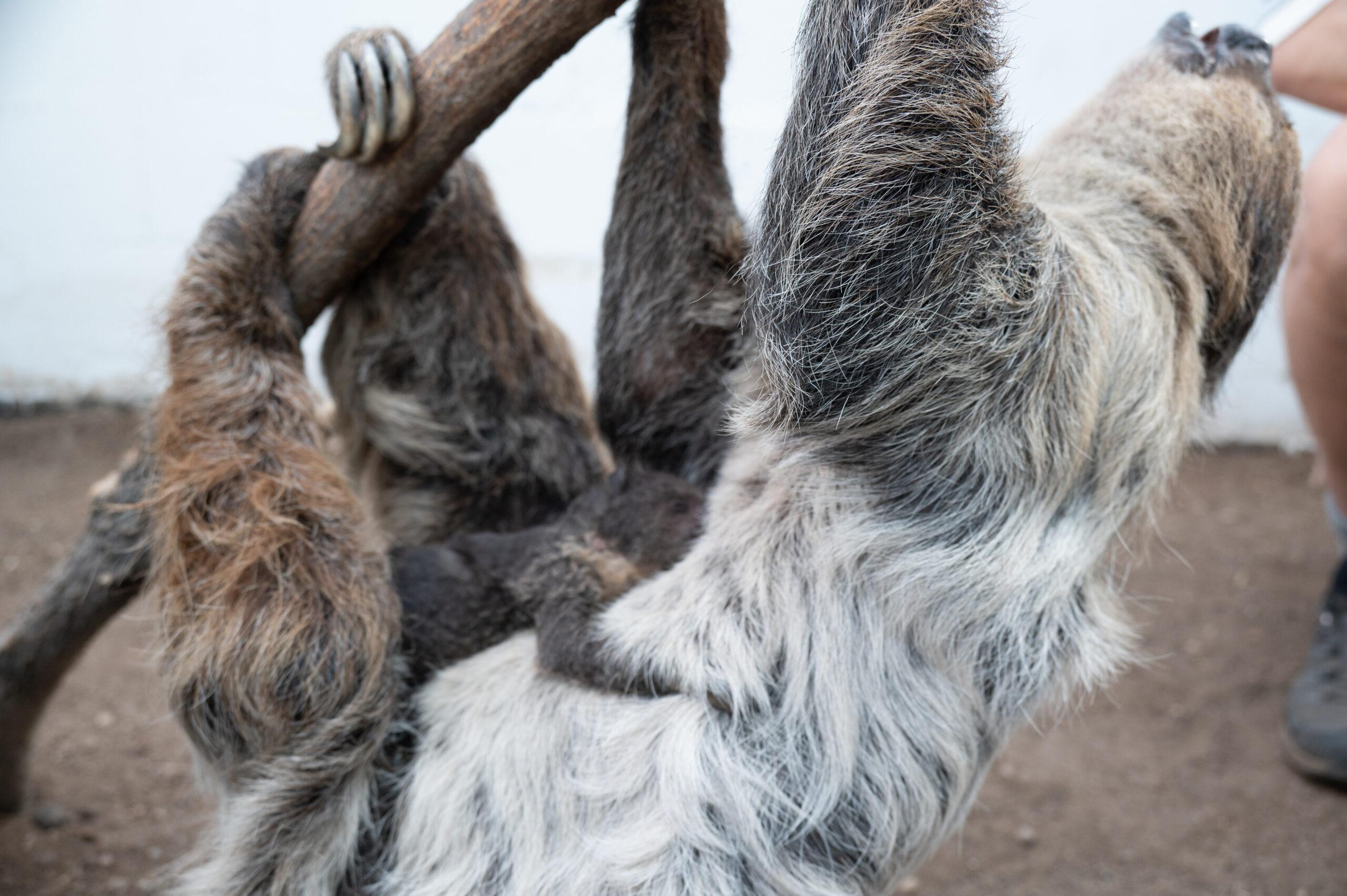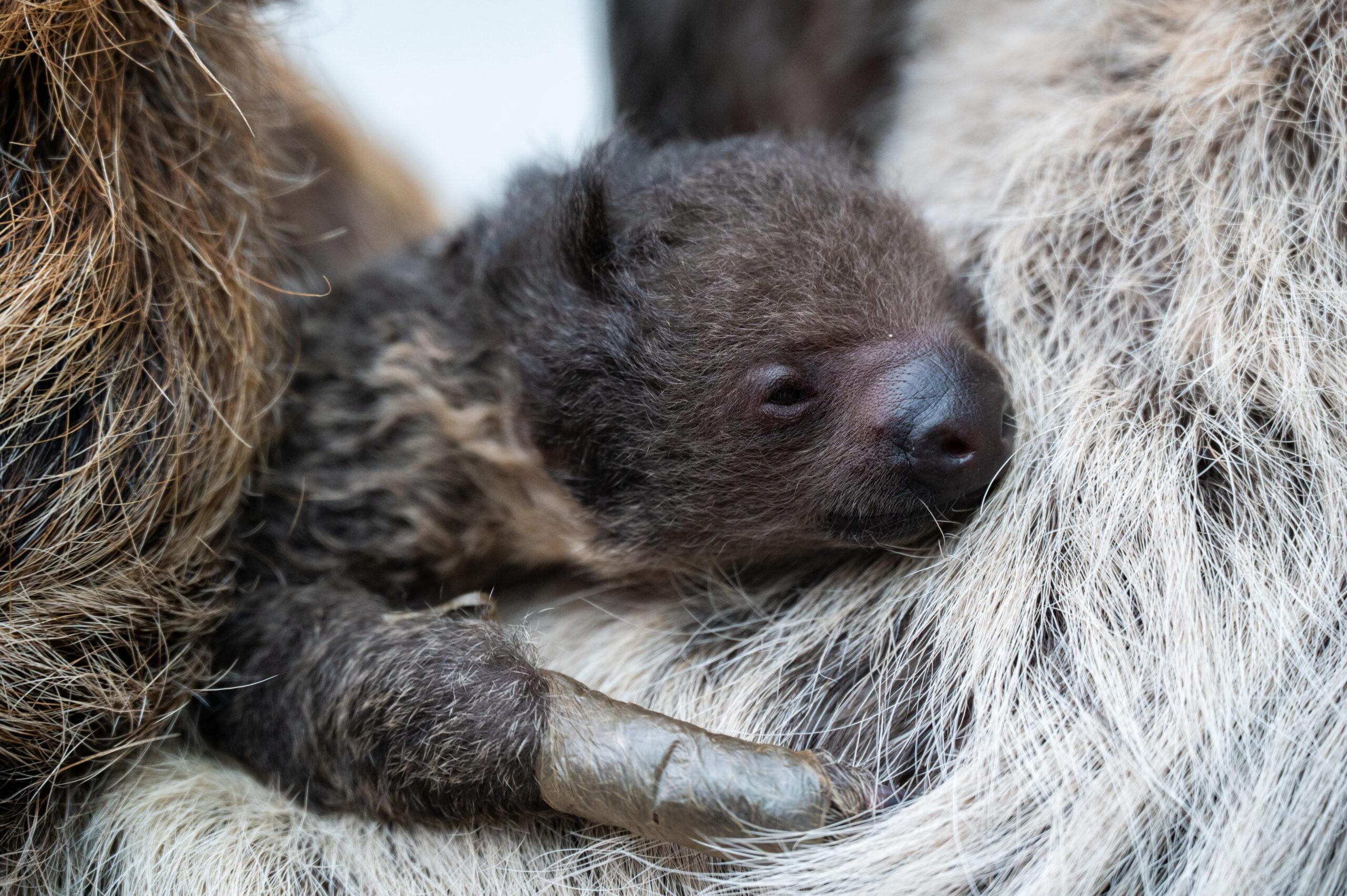Charlotte, a 26-year-old Linne's two-toed sloth, and Elliot, a 31-year-old, gave birth to a brand new baby on Jan. 26, at the Denver Zoo.
Before you ask, no, it doesn't have a name yet, but the zoo will hold a naming contest -- and we'll let you know when that's happening.
In the meantime, here's what we do know about the baby sloth:
The first thing the baby did after being born was to climb up on its mother's belly and latch onto a nipple. It will be hanging out there -- literally, 25 feet above the ground -- for the next few weeks.
The sloth's genitals are too small to make it easy for the zookeepers to assign a sex without disrupting the pup's relationship with its mother. So the Zoo has sent a sample of its hair to an out-of-town lab to make the determination. Once the sex has been figured out, naming contest will happen.
This baby's older brother is named after a hairy Star Wars species: Wookiee.
For the first couple weeks, the baby will be nursing. After that, the Zoo will provide it a mix of sweet potatoes, carrots, squash and biscuit gels cut into French fry-sized pieces.
And here's some more info about sloths for the curious:
Linne's two-toed sloths -- also known as southern two-toed sloths -- are one of the few types of sloths not vulnerable to extinction. In the wild, they live in northern South America and slink around the tree canopy, descending every few weeks to use the restroom, according to Andy Schertz, one of the Zoo's curators and top sloth experts.
The Smithsonian's National Zoo describes sloths as "a walking ecosystem," because their hair harbors moths, ticks and more.
"They can be so slow-moving and sitting still that algae actually grows on their fur in the wild," Schertz said.
When it rains, two-toed sloths' algae coats turn green. That's handy camouflage keeping sloths safe from predators among the trees.
Such sloths have a life expectancy between 10 to 15 years in the wild, though they can live decades in human care.
Why die so young? Well, the algae isn't a perfect self-defense mechanism. Harpy eagles and jaguar ocelots like to gobble them up. Many die from falling out of trees.
Worry not, though. These animals know how to spend their time on earth: they sleep 14 to 17 hours a day.

For now, you can see the pup -- if you're lucky.
While visitors already have a chance to try to spy the sloth in the tree in the Zoo's Tropical Discovery Building, the animal is part of the Denver Zoo's Species Survival Program. The animal could be moved to another zoo for breeding, to ensure genetic diversity.
Older brother Wookiee is still in Denver, participating in the Zoo's Ambassador program, where he's taken out into the community to visit children.
"He'll be a part of our ambassador program until he is called into the breeding program and may go to another zoo and sire offspring of his own," Schertz said.
Between Feb. 3 and 14, the Zoo is hosting Wild at Heart: A Valentine From Denver Zoo to You, half-off admission and a series of romantic events. That includes a $300 four-course dinner for couples in the Tropical Discovery Building on Valentine's Day.
Eat and sloth-watch at the same time. Just don't eat the sloths.











